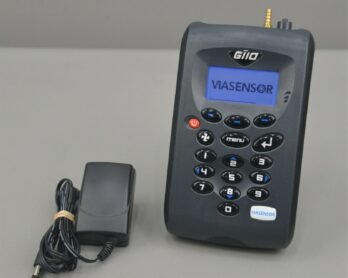In the realm of precise gas analysis, MRU gas analyzers stand as technological marvels, providing insights into a wide range of industrial processes and environmental monitoring. The acronym “MRU” encapsulates a world of innovation and accuracy, making these analyzers invaluable tools in diverse sectors. In this article, we will embark on a journey to unravel the technology behind MRU gas analyzers, understanding their principles of operation, applications, and how they contribute to a more informed and sustainable approach to gas analysis and process optimization.
1. Navigating the Realm of MRU Gas Analyzers
MRU gas analyzers, short for “Measurement, Regulation, and Uptake,” are sophisticated devices designed for accurate gas analysis:
- Varied Applications: MRU gas analyzers find applications in industries ranging from energy production to environmental monitoring.
- Precision Matters: The accuracy and sensitivity of MRU analyzers ensure reliable gas concentration measurements.
2. The Foundation of Gas Analysis: Understanding Sensors
At the heart of MRU gas analyzers lie advanced sensors that enable accurate gas measurement:
- Sensor Types: MRU analyzers employ various sensor technologies, including electrochemical, infrared, and thermal conductivity sensors.
- Gas Interaction: Sensors detect gases based on their specific interaction with the sensor material or technology.
3. Sampling and Gas Collection
MRU gas analyzers rely on precise gas sampling techniques:
- Sample Extraction: A sample of the gas mixture is extracted from the environment under analysis.
- Sample Conditioning: The extracted sample may undergo conditioning to remove impurities that could interfere with measurements.
4. The Role of Measurement Cells
Measurement cells are essential components in MRU gas analyzers:
- Infrared Absorption: Infrared sensors measure gas concentrations by analyzing the absorption of infrared light by gas molecules.
- Electrochemical Reactions: Electrochemical sensors rely on chemical reactions between the gas and the sensor’s electrode to produce a measurable current.
5. Data Analysis and Interpretation
MRU analyzers process data to provide meaningful insights:
- Calibration: Sensors are calibrated using known gas concentrations to establish a reference for accurate measurements.
- Algorithmic Calculation: Analyzers use algorithms to calculate gas concentrations based on sensor readings and calibration data.
6. Real-time Monitoring and Reporting
MRU gas analyzers offer real-time data collection and reporting:
- Immediate Insights: Real-time monitoring provides instant information about gas concentrations in the environment.
- Timely Action: Rapid detection enables swift responses to changes in gas levels, preventing potential hazards.
7. Diverse Applications of MRU Gas Analyzers
The versatility of MRU gas analyzers spans various industries:
- Energy Production: Analyzers optimize combustion processes, leading to increased energy efficiency and reduced emissions.
- Environmental Monitoring: MRU analyzers aid in tracking emissions, ensuring compliance with environmental regulations.
- Industrial Processes: Accurate gas analysis contributes to process optimization and resource utilization.
8. Contribution to Sustainability and Safety
MRU gas analyzers play a pivotal role in sustainable practices:
- Emission Reduction: By optimizing combustion and monitoring emissions, businesses contribute to lower carbon footprints.
- Occupational Safety: Accurate gas analysis ensures safe working conditions in industries dealing with potentially hazardous gases.
9. Future Innovations and Advancements
The realm of MRU gas analyzers continues to evolve:
- Miniaturization: Advancements in technology lead to the development of more compact and portable analyzers.
- Sensor Enhancements: Ongoing research improves the sensitivity, selectivity, and accuracy of gas sensors.














